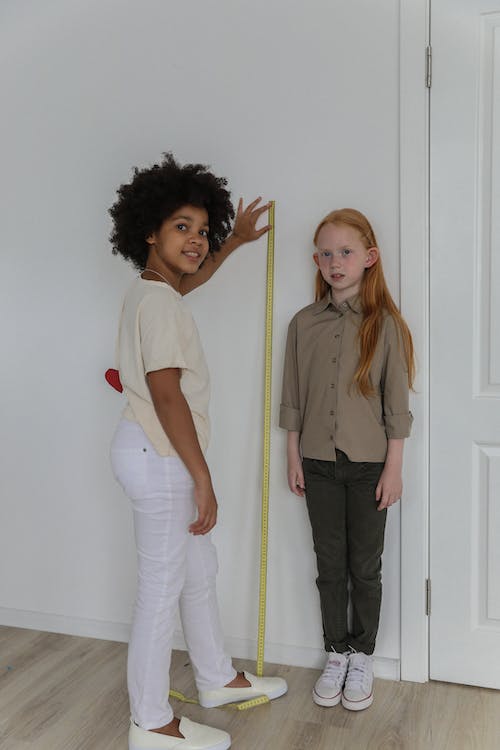Assessing Growth in Children
Assessment of human development needs precise and reproducible measurements of height. It is advised to use a wall-mounted stadiometer to measure height once a child is old enough to stand unassisted. For an adult checkup, the height measuring devices mounted on a scale are adequate, but they are not precise enough for analysis of a child’s development.

Height measurements should be performed by a trained individual. Children should have very little variation in their measurements, so it is advised to take three readings before averaging the results.Measure children from oldest to youngest, working in sequence.
With kids, be firm but kind. Both the caregiver and the child will value calm self-confidence. You must watch out for children who come into contact with any measuring device component and take precautions to prevent any injuries. Never leave children alone in the measuring apparatus; remain nearby. Avoid wearing necklaces, bracelets, and rings that could endanger children or interfere with your job. Before starting the next person, wash your hands, and use alcohol to clean your hands in between measurements.
Introduce yourself by name and inform both adults and children of the processes you’ll be carrying out. This will lessen any potential resistance, fear, or irritation. Before starting the measurement process, attempt to calm down any anxious children who are crying or give them back to the caregiver. To establish a good example for the younger kids, it is helpful to start with the older kids. Thank everyone for their cooperation after measuring all the children.
Focus on what you are doing and minimize any sources of distraction, such as as too many people around you or people talking.
- Kneel to the right side of the height rod, on your right knee only, so that you have maximum of mobility.
- Stand in front of the stadiometer, place the child’s feet as close together as possible and against the back of the wall or healplate of the stadiometer.
- Place your right hand just above the child’s ankles and your left hand on the child’s knees pushing them carefully against the surface, making sure that the knees and legs are straight and the heels and calves are flat against the surface. It is also important that you gently press on the child’s breastbone.
- Ask the child to stand straight with their head parallel to the floor and their line of vision straight forwards. Put your left palm, which is open, on the child’s chin. Slowly close your palm. Ensure that the child’s hands are by the side of their body, that the head, shoulder blades, and buttocks are pressed against the stadiometer’s back, and that the shoulders are in a resting position. Lower the stadiometer’s headpiece with your right hand so that it rests against the top of the child’s head. Avoid applying too much pressure.
- Read the measurement out loud to be recorded. Review the measurement to ensure accuracy.
Children should have their height measured three times in a succession. The measurements should show very little variation, and the end result should be an average of the three.
Ideally each growth assessment ought to be made at the same time of day.